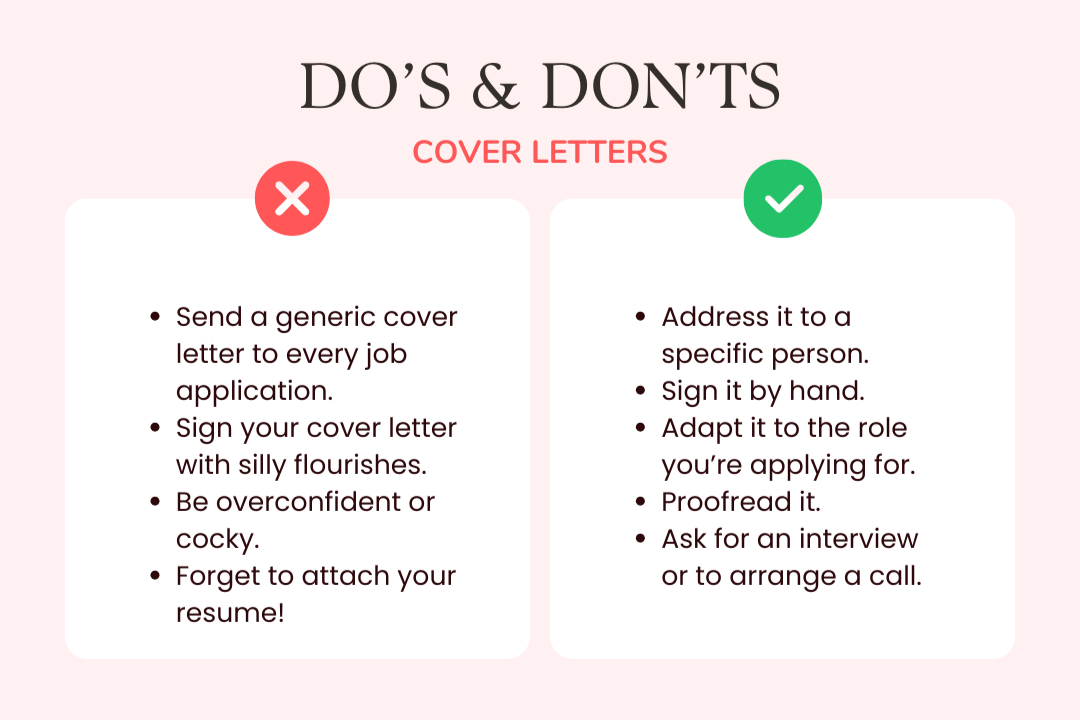When applying to jobs, it can feel like an unnecessary step to also put together a cover letter and it can even be quite annoying if you've already put together a resume or CV and completed a lengthy application form.
So why do so many employers still ask for a cover letter?
There are several uncertainties when it comes to why cover letters exist, but it's been suggested that it was initially to literally cover your resume so that the sensitive or private information was concealed by it.
Additionally, employers could use this to judge applicants, especially when they were handwritten, as the applicants' handwriting and writing style were supposedly reflective of their character and ability to do said job. With the advent of typewriters or word processing, the cover letter would also serve to indicate a candidate's skills in these areas, too.
The cover letter first arose in the early 20th century and has been a solid fixture for applying for jobs ever since. If you've spent hours painstakingly making sure that your resume included everything that it needed, what could you possibly have left to put in your cover letter?
In this article, we'll be looking at what to put in your cover letter and how to make it get you the job or at least an interview!

What Is a Cover Letter For?
Whoever's in charge of hiring would likely have a big stack of resumes complete with cover letters. They'd typically pick up an application, peel back the cover letter, and start scanning the resume.
They'll be looking for keywords and even just a nicely formatted and well-presented resume. They might see something they like, lean in, and start looking at the resume more closely.
Sure, this candidate looks good on paper, but what are they like? This is where they'll likely start reading their cover letter. Others might read it first, but it's surprisingly common for employers to scan resumes for key information first.
If your cover letter sounds good and has what the employer is looking for, then they may arrange a phone interview or call you in for a face-to-face interview.

Your cover letter should expand on the raw details that you included in your application and resume. One thing employers are looking for in particular is candidates who know who they're applying for. They want to see that you've done your research.
For many job applications, especially those online, employers will likely ask where you heard about the role. They'll want candidates who want to work for them and not just find a job.
Saying how you found the role and what made you apply is a good way to start your cover letter. Explain where you saw the job advertised and what it was about this company that made you want to work for them.
Employers love it when they have applicants who buy into the company's mindset and you can show this almost immediately in your cover letter. It also shows that you've done a lot of research, but the work doesn't end there because even with a good cover letter, you might need to prepare for the phone interview.
They'll likely ask you why you want to work with them so it can help to have already answered this right at the start of your cover letter.
What to Cover in Your Cover Letter
Since you're applying for a job and it's a professional role, your cover letter needs to be formal, too. This means that you should typically follow the conventions of a business letter.

These conventions can vary, but it's a good idea to put the following in and align everything to the left margin:
- Sender's name
- Contact details
- Date
- Company HR contact detail
- Subject line
- Greeting/Formal introduction
- Body/content
- Closing line
- Salutation
- Name
- Signature
These are all common for any kind of business letter, but unlike a business letter, it's a good idea to keep your cover letter to three paragraphs if you can.
While you should adapt your resume to each job, you can also save yourself a lot of time by putting together both resume and cover letter templates that you can start every application with and adapt as necessary.
Start the first paragraph of your cover letter as we mentioned earlier by explaining how you found the job and why you want to apply for it. Simply saying that you want to apply isn't enough and is a quick and easy way to have your application immediately rejected.
In the second paragraph, explain why you're the right person for the job. It's fine to even put these in bullet points as this can save the employer a lot of time and the last thing you want is to waste a potential employer's time. You can also use formatting to highlight key information and make sure it jumps off the page.

The closing paragraph needs to sum up your cover letter and essentially close the deal. It should make it clear that you fit the job requirements and then clearly and succinctly explain how they can get in touch to arrange an interview.
Cover Letter Dos and Don'ts
It might seem a silly question to ask at this stage, but you might be wondering if employers read cover letters when they have plenty of applicants.
Many employers will scan your resume first and then go back to the cover letter for more information once they've seen that your resume checks all the requirements.
It can help to make sure that you've written an exceptional resume. Proofread your resume and your cover letter and even consider getting friends or family members to look over it for you, too.
Sign your letter, too. It's much better to do this by hand rather than using a computer-generated signature and try to avoid any flourishes that may look unprofessional like large swoops and certainly don't dot any of the letters in your name with hearts!
Don't rely on somebody to pass your cover letter or application to the right person. Do your research and find out who to address the letter to, use the proper titles if necessary, and avoid using "To whom it might concern".
The toughest part of getting your cover letter right is the tone. You want to sound confident and sure of yourself, but you don't want to sound cocky. You'll want to avoid coming off as too friendly. Try to strike the balance between sounding friendly and respectful. The employer isn't your mate (yet) so treat them with some respect.
It's a good idea to ask for an interview or make it clear what the next steps are. Suggest an interview, further discussion, or another step complete with the means of how to contact you. Make it as easy as possible for your potential employer to move your application forward.
Make sure you attach your resume, too, especially if you're sending this via email. It's so easy to forget to add an attachment and while many mail services will flag emails where you've said something's attached but haven't attached anything, it's still on you to make sure you've sent everything you needed to.
It's also a good idea to think about how to write a ‘thank you’ letter in response to any replies you get for your applications.

For more help with applying to jobs, you can find writing tutors or even career advisors. There are plenty of tutors on Superprof for all levels and budgets and even those with experience helping people further their careers.
Whether you want to brush up on your writing skills, apply to jobs, or just work out where you'd like your career to go, it can help to have someone helping you and private tutoring can offer you tailored solutions that work for you and what you want to do.
You can also use private tutoring to learn new skills. When you start applying to jobs, you may notice that many of them are asking for certain skills and you may need to learn said skills or brush up on them if you haven't used them in a while.
Even if you can't find tutors in your local area, thanks to the internet, you can learn almost anything from tutors all over the world. Many of the tutors on Superprof offer their first lessons for free so you can also try a few out before choosing the one that's right for you. Just the simple act of choosing a tutor can help you understand what employers are going through in an application process!















